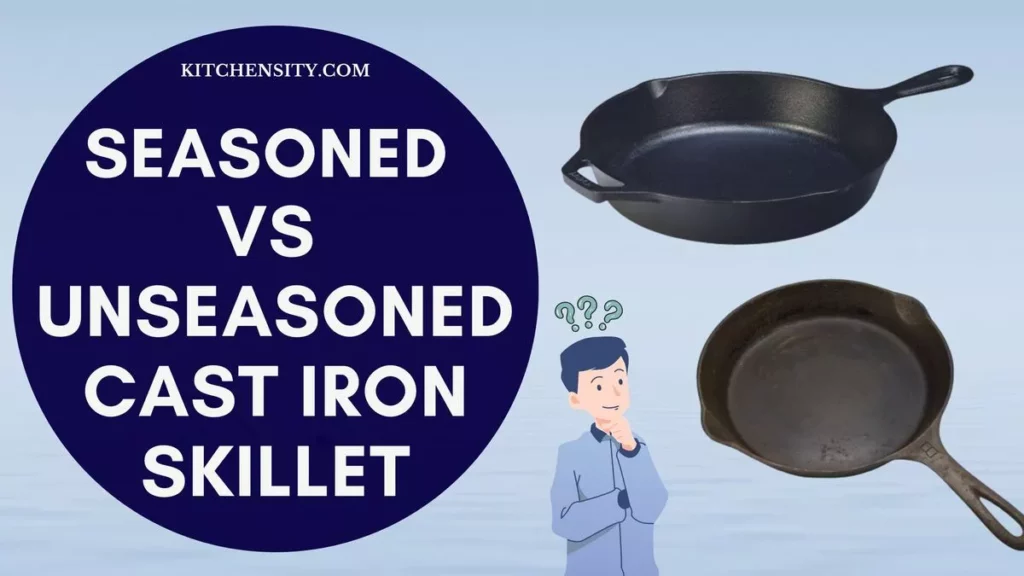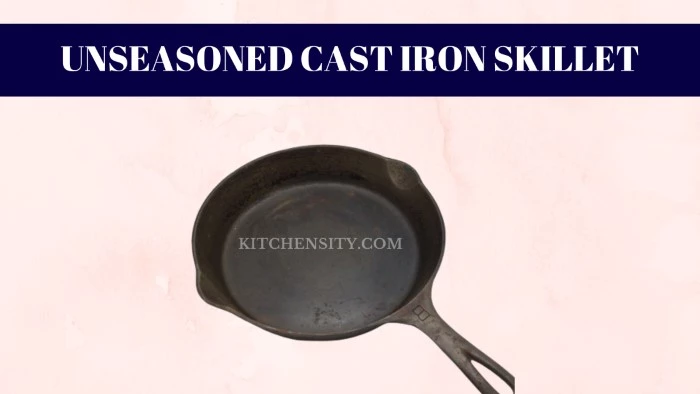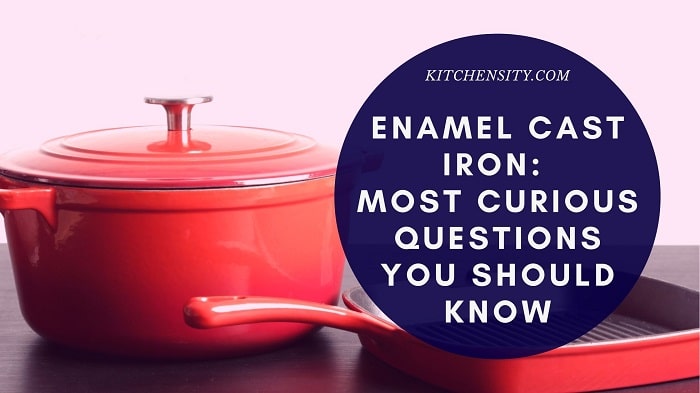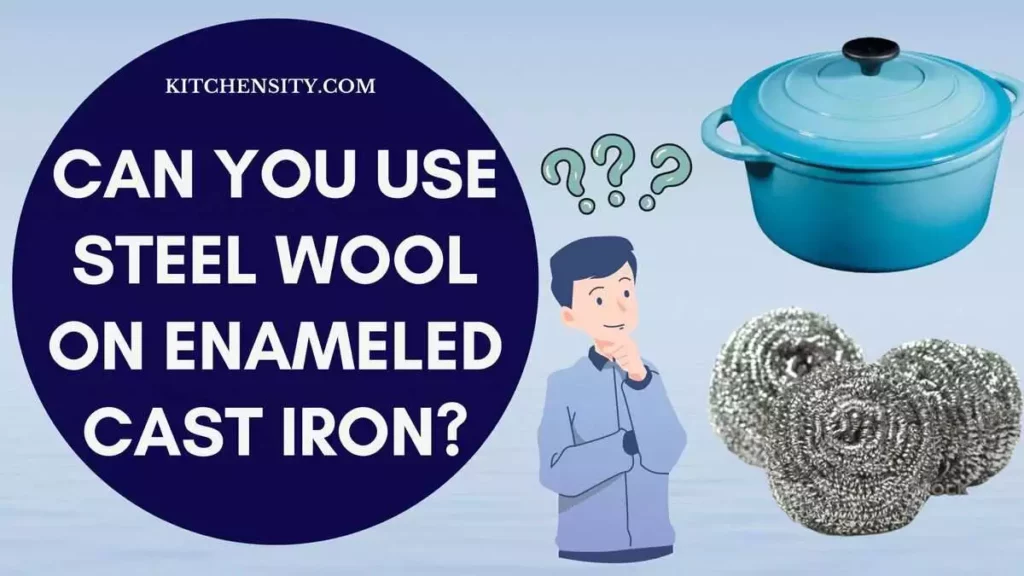When it comes to choosing the right cookware, cast iron skillets have long been a popular option for their durability and heat retention properties.
However, a debate arises among cooking enthusiasts about whether to use a seasoned or unseasoned cast iron skillet.
Each option has its benefits and considerations, making it essential to understand the differences and make an informed decision based on individual cooking preferences.
In this article, we will delve into the comparison between seasoned and unseasoned cast iron skillets, exploring their characteristics, benefits, and maintenance, and ultimately helping you determine which one suits your culinary needs best.

Table of Contents
- 1 Seasoned Vs Unseasoned Cast Iron Skillet – A Quick Comparison
- 2 What Is A Cast Iron Skillet?
- 3 Seasoned Cast Iron Skillet
- 4 Unseasoned Cast Iron Skillet
- 5 Detailed Comparison: Seasoned Vs Unseasoned Cast Iron Skillet
- 6 How to Season An Unseasoned Cast Iron Skillet?
- 7 Is Pre-Seasoned Cast Iron Toxic?
- 8 Maintenance Of A Seasoned Cast Iron Skillet
- 9 Conclusion
- 10 YOU MAY ALSO LIKE
- 11 Frequently Asked Questions (FAQs)
- 11.1 How Do You Know If Your Cast Iron Skillet Is Seasoned?
- 11.2 Can You Cook In An Unseasoned Cast Iron Skillet?
- 11.3 Is It Better To Buy A Seasoned Or Unseasoned Cast Iron Skillet?
- 11.4 Can I Use Soap To Clean A Seasoned Cast Iron Skillet?
- 11.5 How Often Should I Season My Cast Iron Skillet?
- 11.6 Can I Use A Metal Spatula On A Seasoned Cast Iron Skillet?
- 11.7 Can I Cook Acidic Foods In A Seasoned Cast Iron Skillet?
- 11.8 Can I Use An Unseasoned Cast Iron Skillet Immediately After Purchase?
Seasoned Vs Unseasoned Cast Iron Skillet – A Quick Comparison
A seasoned cast iron skillet has a protective layer of polymerized oil, creating a non-stick surface, and offers the convenience of easy cooking and cleaning. An unseasoned cast iron skillet lacks these benefits but can be seasoned by the user to improve its performance and gain the advantages of a seasoned skillet.
Also Read – Why Do Cast Iron Pans Crack?
What Is A Cast Iron Skillet?
Before diving into the comparison, let’s define what a cast iron skillet is. A cast iron skillet is a cooking utensil made from cast iron, known for its excellent heat retention and even heat distribution. It is commonly used for frying, searing, baking, and sautéing various types of food.
Seasoned Cast Iron Skillet
A seasoned cast iron skillet refers to a cast iron skillet that has been treated with a layer of polymerized oil, resulting in a natural non-stick surface.
- Seasoning is a process that involves heating the skillet with oil, allowing it to bond to the iron and create a protective layer.
- This layer not only prevents food from sticking to the skillet but also imparts a unique flavor to the cooked dishes.
- Seasoning a cast iron skillet is an essential step in its maintenance and enhances its performance in the kitchen.
Also Read – How To Clean A Cast Iron Grill Pan?
Benefits Of Seasoning
Seasoning a cast iron skillet offers several benefits that make it a preferred choice among cooking enthusiasts. Here are some key advantages of using a seasoned cast iron skillet:
- Non-Stick Surface:
- One of the primary benefits of seasoning is the development of a natural non-stick surface.
- The polymerized oil creates a smooth and slick coating on the skillet, reducing the chances of food sticking to the surface.
- This non-stick property makes cooking and cleaning much easier and more enjoyable.
- Enhanced Flavor:
- Over time, as the cast iron skillet gets seasoned, it develops a unique patina. This patina adds depth and richness to the flavors of the cooked food.
- The accumulated oils and fats contribute to a subtle seasoning that can enhance the taste and overall culinary experience.
- Even Heat Distribution:
- Seasoning helps improve the heat distribution of the cast iron skillet.
- The layer of polymerized oil acts as a heat conductor, allowing for even distribution of heat across the cooking surface.
- This ensures that food is cooked more evenly, reducing the risk of hotspots and providing consistent results.
- Versatility:
- A seasoned cast iron skillet is incredibly versatile and can be used for a wide range of cooking techniques.
- Whether you’re frying, searing, baking, or sautéing, the non-stick surface and excellent heat retention of a seasoned skillet make it an ideal choice for various dishes.
- Durability:
- Seasoning helps protect the cast iron skillet from rust and corrosion.
- The layer of polymerized oil acts as a barrier, preventing moisture from coming into direct contact with the iron.
- This significantly extends the lifespan of the skillet and ensures its long-term durability.
- Chemical-Free Cooking:
- Unlike non-stick pans coated with synthetic chemicals, a properly seasoned cast iron skillet provides a chemical-free cooking experience.
- Seasoning relies on natural oils, making it a healthier and safer option for preparing meals.
By seasoning your cast iron skillet, you unlock these benefits, transforming it into a reliable and versatile cooking tool that can elevate your culinary endeavors to new heights.
Also Read – Cast Iron Skillet Gift Basket Ideas
Unseasoned Cast Iron Skillet
An unseasoned cast iron skillet refers to a cast iron skillet that has not undergone the process of seasoning. Unlike a seasoned skillet, an unseasoned skillet lacks a protective layer of polymerized oil on its surface, which results in a natural non-stick coating.
Without the seasoning, an unseasoned cast iron skillet may have a rougher surface and lacks the desirable non-stick properties of a seasoned skillet.
This means that when cooking with an unseasoned skillet, there is a higher likelihood of food sticking to the surface, making it more challenging to cook and clean.
Also Read – Can You Use Olive Oil To Season Cast Iron Pans?
What Does Unseasoned Cast Iron Look Like?
Unseasoned cast iron typically has a raw, matte gray appearance. Without the protective layer of seasoning, the surface of an unseasoned cast iron skillet may appear rough and porous. It lacks the smooth, glossy finish that is characteristic of a seasoned cast iron skillet.

- When new, unseasoned cast iron may have a slightly metallic sheen, but over time, without seasoning or proper maintenance, it can develop a dull and rusty appearance.
- Unseasoned cast iron may be susceptible to rust and corrosion if not properly cared for.
It’s important to note that the appearance of an unseasoned cast iron skillet can vary depending on factors such as the brand, manufacturing process, and any protective coating applied during packaging.
Some unseasoned cast iron skillets may come with a light protective coating or oil to prevent rust before the initial seasoning is done by the user.
Also Read – Is It Safe To Cook In A Rusty Cast Iron Pan?
What Happens If You Cook In An Unseasoned Cast Iron Skillet?
Cooking with an unseasoned cast iron skillet presents several challenges due to the absence of the protective layer and non-stick properties found in a seasoned skillet.
Here are the main challenges associated with using an unseasoned skillet:
- Food Sticking:
- Without the seasoning layer, an unseasoned cast iron skillet is more prone to food sticking to its surface.
- This can make it difficult to flip or remove food, leading to a less enjoyable cooking experience and potentially affecting the appearance and texture of the dish.
- Uneven Heat Distribution:
- An unseasoned skillet may exhibit uneven heat distribution.
- Without the protective layer, heat is not distributed as efficiently across the surface of the skillet.
- This can result in certain areas being hotter than others, leading to uneven cooking and potentially causing food to burn or cook inconsistently.
- Susceptibility To Rust:
- Cast iron is susceptible to rust when exposed to moisture.
- Without the protective seasoning layer, an unseasoned cast iron skillet is more vulnerable to rust formation.
- It is crucial to ensure the skillet is dried thoroughly after each use and stored in a dry environment to prevent rust from developing.
- Cleaning Challenges:
- Cleaning an unseasoned skillet can be more challenging compared to a seasoned one.
- Food residue may adhere more stubbornly to the surface, requiring extra effort to remove.
- Scrubbing too vigorously or using harsh cleaning agents can further exacerbate the issue and potentially damage the skillet’s surface.
- Lack Of Non-Stick Properties:
- The absence of a seasoned layer means that an unseasoned cast iron skillet lacks the natural non-stick properties found in a seasoned skillet.
- This can make cooking certain foods, such as delicate fish or eggs, more challenging, as they are more likely to stick to the surface, requiring additional oil or cooking techniques to prevent sticking.
It’s important to note that these challenges can be mitigated by seasoning the cast iron skillet. Seasoning creates a protective layer, enhances non-stick properties, improves heat distribution, and helps prevent rust formation.
With proper seasoning and care, an unseasoned cast iron skillet can be transformed into a reliable cooking tool.
Also Read – Why Griswold Cast Iron Is So Expensive?
Detailed Comparison: Seasoned Vs Unseasoned Cast Iron Skillet
When considering whether to use a seasoned or unseasoned cast iron skillet, it’s essential to understand how these options compare in various aspects.
Let’s explore the comparison between seasoned and unseasoned cast iron skillets:
1. Non-Stick Properties
- Seasoned Skillet: A seasoned cast iron skillet offers excellent non-stick properties. The polymerized oil creates a smooth and slick surface that prevents food from sticking, making cooking and cleaning easier.
- Unseasoned Skillet: An unseasoned cast iron skillet lacks the natural non-stick properties of a seasoned skillet. Without the protective layer, food is more likely to stick to the surface, making cooking and cleaning more challenging.
2. Cooking Performance
- Seasoned Skillet: Seasoned skillets distribute heat evenly across the surface due to the seasoning layer. This results in better cooking performance, as food is cooked more uniformly.
- Unseasoned Skillet: An unseasoned skillet may have uneven heat distribution, leading to hotspots on the surface. This can cause food to cook unevenly and may require more attention and adjustment while cooking.
Also Read – Is Enameled Cast Iron Cookware Safe?
3. Maintenance
- Seasoned Skillet: Seasoned skillets require minimal maintenance. The seasoning layer acts as a protective barrier, reducing the chances of rust formation. Cleaning typically involves using hot water and a brush or sponge without harsh detergents.
- Unseasoned Skillet: Maintaining an unseasoned skillet requires additional care. It is more susceptible to rust, so thorough drying after cleaning is crucial. Applying a layer of oil or seasoning the skillet regularly is necessary to prevent rust and maintain its cooking surface.
4. Versatility
- Seasoned Skillet: Seasoned cast iron skillets are highly versatile and can be used for various cooking techniques. They excel in frying, searing, baking, and sautéing, providing excellent heat retention and even cooking.
- Unseasoned Skillet: While an unseasoned skillet can be seasoned by the user, in its unseasoned state, it may have limitations in terms of its non-stick properties and even heat distribution. This can impact its versatility in certain cooking applications.
Also Read – Do You Need To Season Enameled Cast Iron?
5. Longevity
- Seasoned Skillet: Properly seasoned and maintained cast iron skillets have exceptional longevity. The seasoning layer helps protect the skillet from rust and corrosion, contributing to its durability and long lifespan.
- Unseasoned Skillet: Without the protective seasoning layer, an unseasoned skillet is more prone to rust and may require more careful maintenance to ensure its longevity.
So, seasoned cast iron skillets offer the advantages of a non-stick surface, even heat distribution, and easier maintenance. They are versatile and durable, providing a reliable cooking experience.
On the other hand, unseasoned skillets require seasoning and may have limitations in terms of non-stick properties and heat distribution. However, with proper seasoning and care, an unseasoned skillet can be transformed into a seasoned one, gaining the benefits associated with a seasoned cast iron skillet.
The choice between seasoned and unseasoned cast iron skillets ultimately depends on personal preferences, cooking needs, and willingness to maintain and season the skillet.
Also Read – Can You Use Enameled Cast Iron On A Glass Cooktop?
Difference Between Pre-Seasoned And Unseasoned Cast Iron – Comparison Chart
Here’s a comparison chart highlighting the differences between seasoned and unseasoned cast iron skillets:
| Seasoned Cast Iron Skillet | Unseasoned Cast Iron Skillet | |
| Non-Stick | Offers excellent non-stick properties | Lacks natural non-stick properties |
| Cooking | Even heat distribution for consistent cooking | May have uneven heat distribution |
| Performance | Better cooking performance | May require more attention while cooking |
| Maintenance | Requires minimal maintenance | Requires extra care and regular seasoning |
| Versatility | Highly versatile for various cooking techniques | Can be versatile after seasoning |
| Longevity | Durable and long-lasting | May require additional maintenance for longevity |
It’s important to note that while seasoned cast iron skillets offer immediate non-stick properties and better heat distribution, an unseasoned cast iron skillet can be seasoned by the user to improve its performance and gain the benefits associated with seasoning.
Also Read – Can You Put Enamel Cast Iron In The Dishwasher?
How to Season An Unseasoned Cast Iron Skillet?
Seasoning an unseasoned cast iron skillet is a straightforward process that can be done at home. Follow these steps to season your unseasoned cast iron skillet:
- Wash The Skillet:
- Start by washing the unseasoned cast iron skillet with warm water and mild dish soap.
- This step helps to remove any manufacturing residue, dirt, or impurities on the surface of the skillet.
- Use a sponge or brush to scrub gently and ensure that all the nooks and crannies are cleaned thoroughly.
- Rinse the skillet under running water to remove any soap residue.
- Dry The Skillet:
- After washing, it’s crucial to dry the skillet completely.
- Use a clean towel or paper towel to absorb any moisture on the surface.
- Make sure to dry both the inside and outside of the skillet.
- Even a small amount of moisture can lead to rust formation, so take the time to ensure the skillet is completely dry before proceeding to the next step.
- Apply A Layer Of Oil:
- Choose a high-smoke-point oil such as vegetable oil, canola oil, or flaxseed oil.
- These oils are suitable for seasoning as they can withstand the high temperatures involved in the process.
- Pour a small amount of oil onto the skillet’s surface, then use a clean cloth or paper towel to spread it evenly.
- Make sure to cover the entire cooking surface, including the sides and handle of the skillet.
- Remove Excess Oil:
- After applying the oil, use a fresh paper towel to remove any excess oil from the skillet.
- The goal is to create a thin, even coating of oil on the surface.
- Removing excess oil helps prevent the formation of sticky or gummy spots during the seasoning process.
- Bake The Skillet:
- Place the skillet upside down on the middle rack of your oven to catch any drips. Preheat your oven to around 350°F (175°C).
- Once the oven reaches the desired temperature, carefully place the skillet inside.
- Let it bake for about an hour. The heat helps the oil bond with the cast iron, creating a durable and protective layer.
- Let It Cool:
- After an hour of baking, turn off the oven and allow the skillet to cool inside.
- Avoid touching the hot skillet with your bare hands to prevent burns.
- Allowing the skillet to cool gradually helps to set the seasoned layer and ensures that it adheres well to the cast iron surface.
Once the skillet has cooled down, it is now seasoned and ready to use. The seasoning process forms a protective layer on the surface, enhancing the non-stick properties and preventing rust.
Remember, the more you use and maintain your seasoned cast iron skillet, the better it becomes. Over time, the seasoning will develop and improve, making your skillet a reliable and versatile cooking tool.
Note: Seasoning an unseasoned cast iron skillet may create some smoke. Ensure proper ventilation in your kitchen by opening windows or using an exhaust fan while seasoning.
Also Read – How To Season And Clean Cast Iron Cookware?
Is Pre-Seasoned Cast Iron Toxic?
No, pre-seasoned cast iron is not toxic. The seasoning on these skillets typically consists of a layer of food-grade oils that have been heated to bond with the iron surface.
When properly seasoned, the layer creates a natural non-stick surface and acts as a protective barrier between the food and the iron, preventing direct contact and potential leaching of iron into the food.
Cast iron is generally considered safe for cooking, and consuming small amounts of iron from cooking with cast iron skillets can even be beneficial for individuals with iron deficiencies.
To ensure safety and longevity, it’s important to follow proper seasoning and maintenance practices for pre-seasoned cast iron skillets.
- Avoid using abrasive cleaning agents or harsh chemicals that can strip away the seasoning layer.
- By doing so, you can enjoy the benefits of a non-toxic, durable, and versatile cooking tool that is the pre-seasoned cast iron skillet.
Also Read – Can You Use Vinegar On Enameled Cast Iron?
Maintenance Of A Seasoned Cast Iron Skillet
Maintaining a seasoned cast iron skillet is relatively simple and ensures its longevity and optimal performance. Here are some key tips for the maintenance of a seasoned cast iron skillet:
- Cleaning:
- After each use, clean the skillet with hot water and a brush or sponge. Avoid using soap, as it can strip away the seasoning.
- If there are stubborn food residues, you can use a small amount of coarse salt or a gentle scrubbing pad to aid in the cleaning process.
- Rinse the skillet thoroughly to remove any remaining food particles.
- Drying:
- Thoroughly dry the skillet after cleaning to prevent rust. Use a clean towel or paper towel to absorb the moisture.
- Place the skillet on a stovetop burner or in a warm oven for a few minutes to ensure complete drying.
- It’s crucial to remove all moisture from the surface, as any lingering water can lead to rust formation.
- Re-Seasoning:
- Regularly re-season your cast iron skillet to maintain its non-stick properties and protective layer.
- To do this, apply a thin layer of oil (such as vegetable oil or flaxseed oil) to the skillet’s surface, including the handle.
- Heat the skillet upside down in a preheated oven at around 350°F (175°C) for about an hour.
- Let the skillet cool in the oven before removing it.
- Repeating this process periodically helps replenish the seasoning and keep the skillet in optimal condition.
- Avoid Prolonged Exposure To Moisture:
- Cast iron is susceptible to rust, so it’s essential to keep your seasoned skillet dry.
- Avoid leaving it soaking in water or exposing it to excessive moisture.
- If necessary, use a cloth or paper towel to wipe away any moisture or condensation before storing the skillet.
- Avoid Harsh Cleaning Agents:
- Refrain from using abrasive cleaners, metal scouring pads, or harsh cleaning chemicals on your seasoned cast iron skillet.
- These can damage the seasoning layer and strip away the protective coating.
- Stick to gentle cleaning methods with hot water and mild scrubbing tools to preserve the skillet’s seasoning.
- Proper Storage:
- Store your seasoned cast iron skillet in a dry location. Make sure it is completely dry before storing it to prevent rust formation.
- To protect the seasoning layer, you can place a paper towel or a thin layer of oil on the surface of the skillet.
- Store it in a cool, dry place with adequate ventilation to prevent moisture buildup.
Also Read – Can You Put Enameled Cast Iron In The Oven?
Conclusion
So, the choice between a seasoned and unseasoned cast iron skillet ultimately depends on personal preferences and cooking needs.
A seasoned cast iron skillet offers the benefits of a non-stick surface, even heat distribution, versatility, and ease of maintenance. On the other hand, an unseasoned skillet can be seasoned by the user to improve its cooking performance.
While a seasoned skillet provides immediate advantages, with proper seasoning and care, an unseasoned skillet can be transformed into a seasoned one, gaining the benefits associated with a seasoned cast iron skillet.
Whichever option you choose, cast iron skillets are known for their durability and ability to retain heat, making them a valuable tool in the kitchen for achieving delicious and memorable meals.
YOU MAY ALSO LIKE
- Does Enamel Cast Iron Chip?
- How To Clean A Cast Iron Grill Pan?
- Why Does Food Stick To My Enamel Cast Iron?
- Best Enameled Cast Iron Cookware Sets
Frequently Asked Questions (FAQs)
-
How Do You Know If Your Cast Iron Skillet Is Seasoned?
You can tell if your cast iron skillet is seasoned by its smooth, non-stick surface and dark, glossy patina.
-
Can You Cook In An Unseasoned Cast Iron Skillet?
Yes, you can cook in an unseasoned cast iron skillet, but it may have challenges such as food sticking and uneven heat distribution.
-
Is It Better To Buy A Seasoned Or Unseasoned Cast Iron Skillet?
It is generally better to buy a seasoned cast iron skillet as it comes with a protective layer, non-stick properties, and improved heat distribution. However, an unseasoned skillet can be seasoned by the user to gain these benefits.
-
Can I Use Soap To Clean A Seasoned Cast Iron Skillet?
Yes, but it’s best to avoid using soap as it can strip away the seasoning. Hot water and a brush or sponge are usually sufficient for cleaning.
-
How Often Should I Season My Cast Iron Skillet?
It depends on how frequently you use it. Generally, you can season your skillet every few months or as needed.
-
Can I Use A Metal Spatula On A Seasoned Cast Iron Skillet?
Yes, a metal spatula is safe to use on a seasoned cast iron skillet. The seasoning creates a protective layer that can withstand metal utensils.
-
Can I Cook Acidic Foods In A Seasoned Cast Iron Skillet?
While seasoned skillets can handle acidic foods to some extent, it’s best to avoid prolonged contact with highly acidic ingredients as they may damage the seasoning.
-
Can I Use An Unseasoned Cast Iron Skillet Immediately After Purchase?
It’s recommended to season an unseasoned cast iron skillet before use. Seasoning creates a protective layer and enhances its cooking properties.
Katrina Smith is a seasoned expert with over 25 years of experience in all things related to cooking and the kitchen. As an avid cook and kitchen enthusiast, she is passionate about sharing her knowledge and expertise on cookware, kitchen appliances, kitchen tips, and kitchen staples.
Through her articles and reviews, Katrina aims to inspire and help others improve their cooking skills, experiment with different ingredients, and invest in quality cookware and appliances.

![How To Season And Clean Cast Iron Cookware? [4 Effective Ways] 4 How To Season And Clean Cast Iron Cookware](https://www.kitchensity.com/wp-content/uploads/2020/06/How-To-Season-And-Clean-Cast-Iron-Cookware.jpg)




